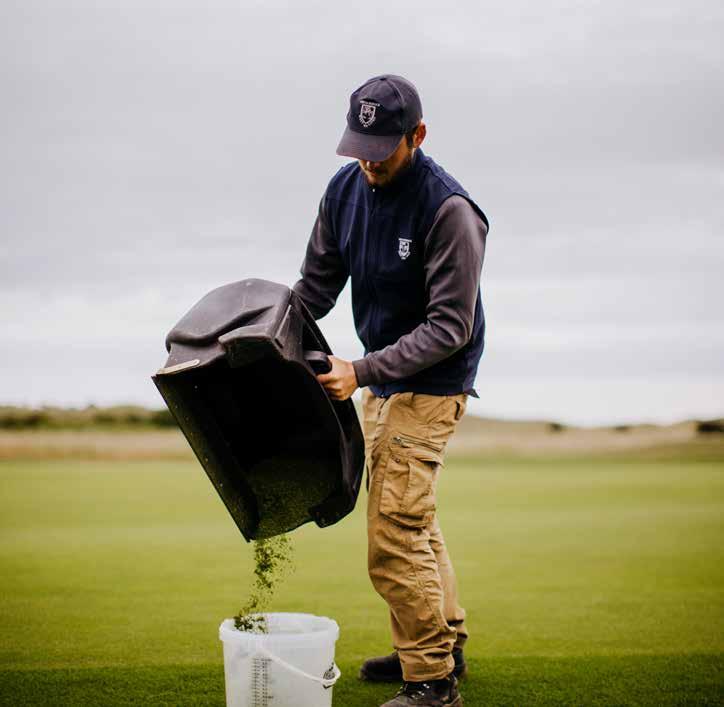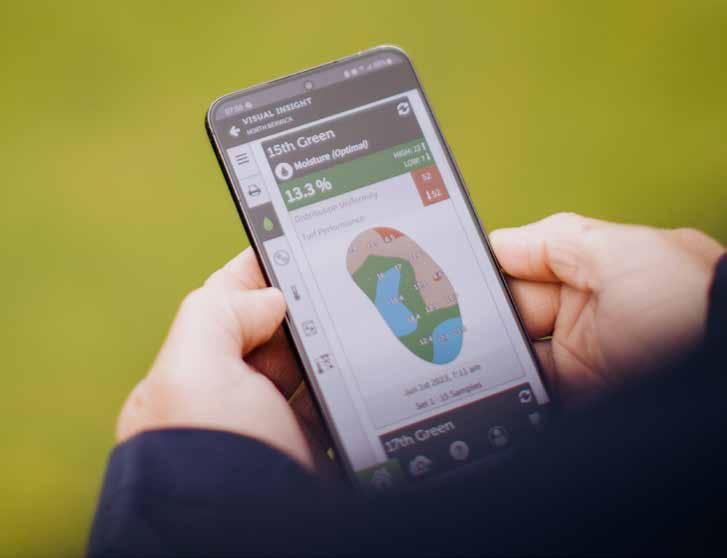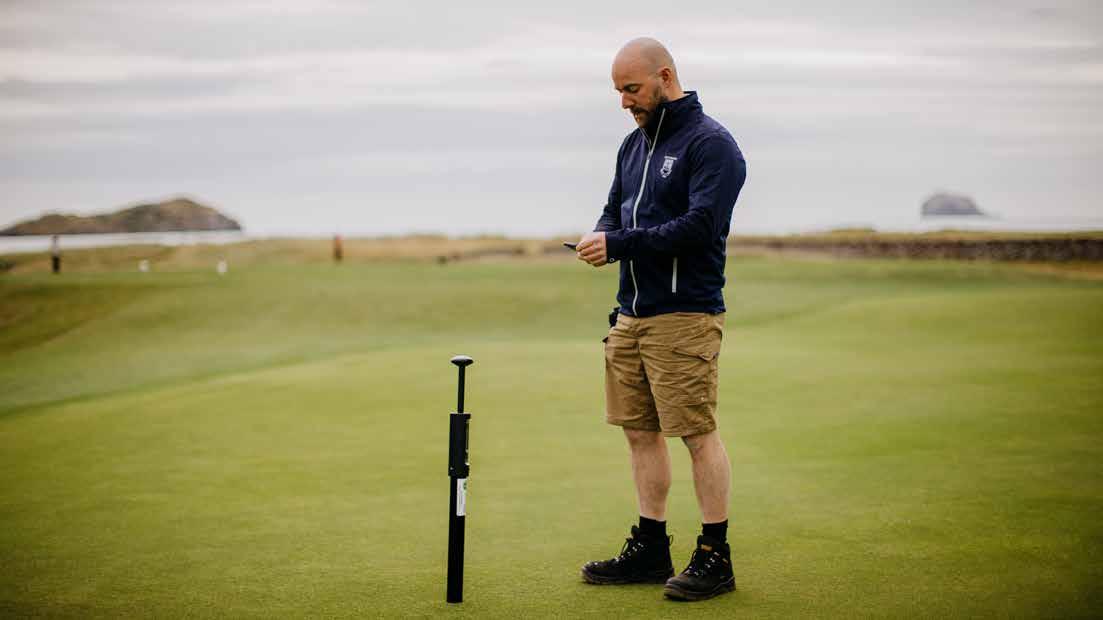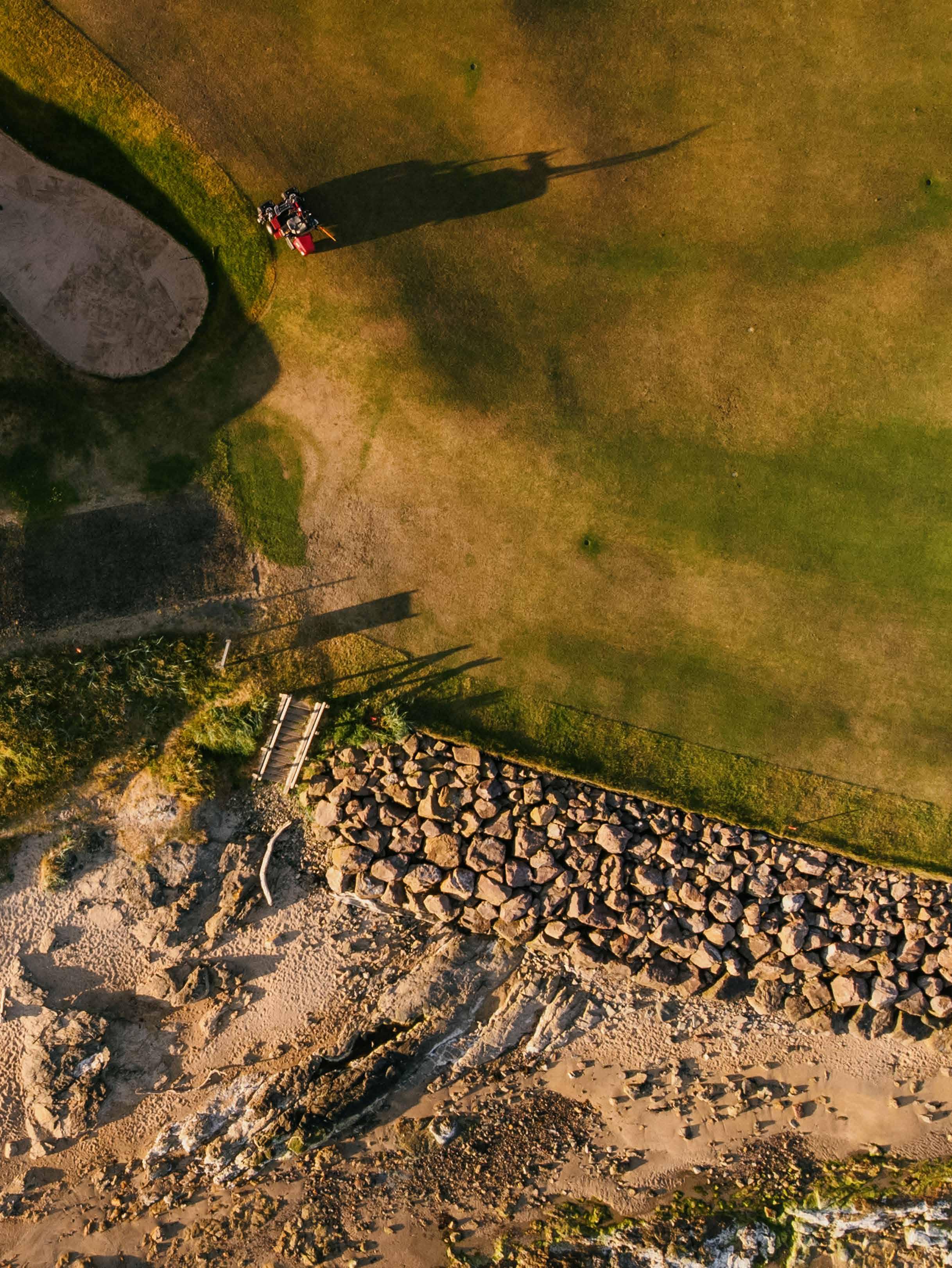
2 minute read
Tools of the trade
We get asked a lot of questions about the magic machinery we use out on the course. These different tools allow our team to collect vital data that helps us make more informed decisions to ensure the best health at North Berwick… and means we can also monitor and benchmark our working practices year to year.
Moisture (POGO)
Moisture is one of the most important measurements we take. Moisture management is key to so many aspects of golf course maintenance. We aim to have an average Volumetric Water Content (VWC) of 12-15% on the greens. Lower than this can be stressful to the plant, especially during periods of warm weather. VWC of 15-20% is still a good range to be in, but higher than 20% and the firmness of the greens will decrease, disease activity will increase and the less desirable grasses will be quite happy to be receiving plenty of moisture. Monitoring moisture will also help to aid irrigation planning and determine whether we need to apply irrigation or follow up with a level of supplemental irrigation via hand watering.
Height of Cut (Prism Gauge)
This is used to identify the “actual” height of cut versus what is the “bench” height of cut. It is an incredibly useful way for Richard, our mechanic, to make sure the mowers are set to the correct height of cut and are cutting correctly.
Macroscope
The macroscope allows us to look close up at the problems such as diseases or disorders with turf in order to help us identify the problem. The magnification is quite incredible – it makes tiny grains of sand look like pebbles sitting in the canopy. We also use this to check the cutting quality of our mowers and to make sure we are getting a nice clean cut and not inadvertently ripping the turf with blunt units.
Clipping Volume
This was something that was started in 2022 and was found to be highly useful was measuring the clipping volume taken off by the mowers on greens by putting it in a bucket and recording how many clippings there are in litres. After a few months of measuring the clip we were able to make better informed decisions based on how much we were taking off. Above a certain number it indicated that PGR (Plant Growth Regulators) might have to be applied or alternatively, if the number proved to be too low, it was perhaps time to apply a foliar fertiliser. Even if the clip was found to be high, but the green speeds were of a good pace, it might mean a need to groom or verticut greens to remove some lateral growth.
Soil Temperature (Thermometer)
Measuring the soil temperature helps us to learn if conditions are good for seed germination or fertiliser uptake. Seed will germinated at average temperatures over 10c and the turfs ability to grow (growth potential) is at average temperatures over 6c.
Surface Firmness (Clegg Hammer)
There is a direct correlation between surface firmness and moisture. If the moisture is too high, it is guaranteed that the firmness readings will be low, resulting in soft greens. Typically on a links course, we are looking to produce firm greens (>90 gravities), which is also another reason why managing moisture levels are so important. Using a Clegg Hammer that measures the deceleration of a weight from a measured height, measurements are taken across 12 points across the green to which the average firmness is then found.
Green Speed (Stimp Meter)
This is probably the most controversial and misunderstood tool and measurement we take. The Stimp Meter is used to calculate the speed of the greens by placing a ball on a notch on the Stimp Meter and raising it slowly until the ball comes off the notch and travels across the green. This is done three times in two directions to find the average reading. While many people assume that we use the stimp to try to make the greens faster, we actually use it to find a consistent ball speed and to have a clearly defined dataset that shows us how the different weather patterns, mowing or rolling practices and day-to-day growth can all directly or indirectly affect the green speed.















